By David Jen
An undulating canopy will soon float over a new arts center in the world’s most populated urban area when it begins construction this year.
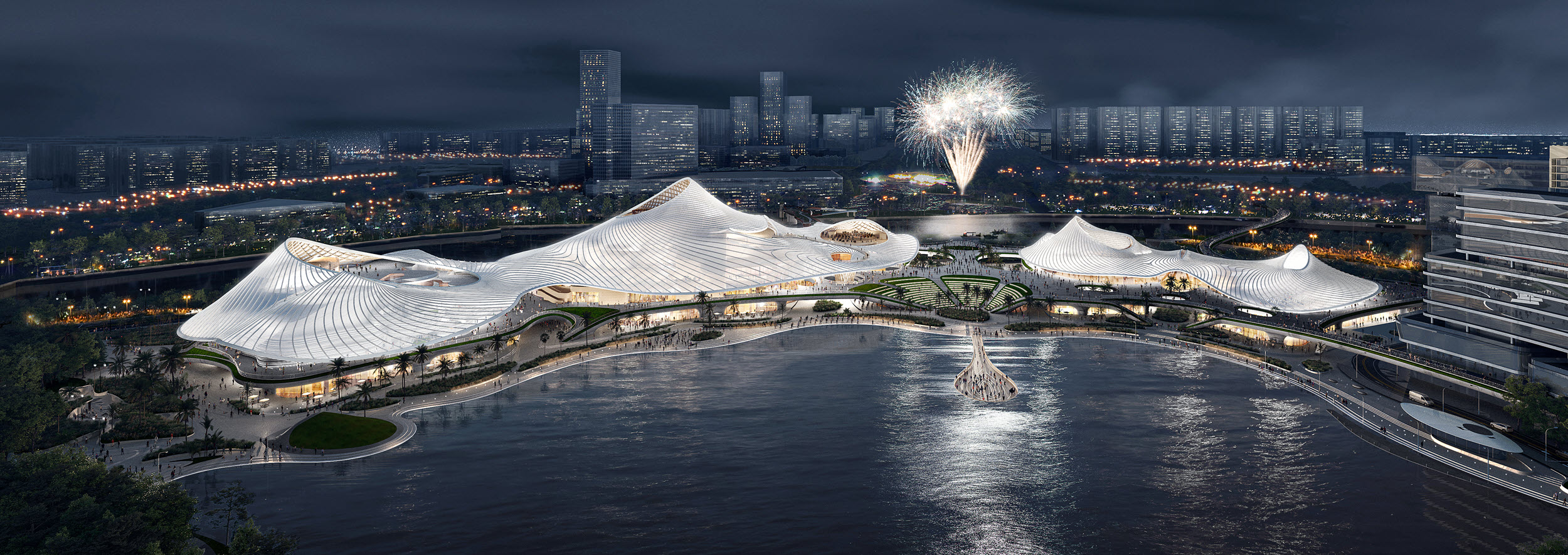
Designed by Beijing-based firm MAD Architects, the Nanhai Art Center will feature a translucent, ethylene-tetrafluoroethylene membrane, resembling “a continuous wave of water” over its three main buildings in Foshan, China, within the Pearl River Delta, according to press material from MAD.
"The local culture of southern Guangdong (province) is always about the gathering of people,” says MAD founding partner Ma Yansong. The available cultural spaces play a large part in making these gatherings possible. “The design of the Nanhai Art Center wants to provide the maximum … spaces for such activities, (and) it is also inspired by the large eaves of the traditional architecture of Lingnan (ancient broader Guangdong area).”
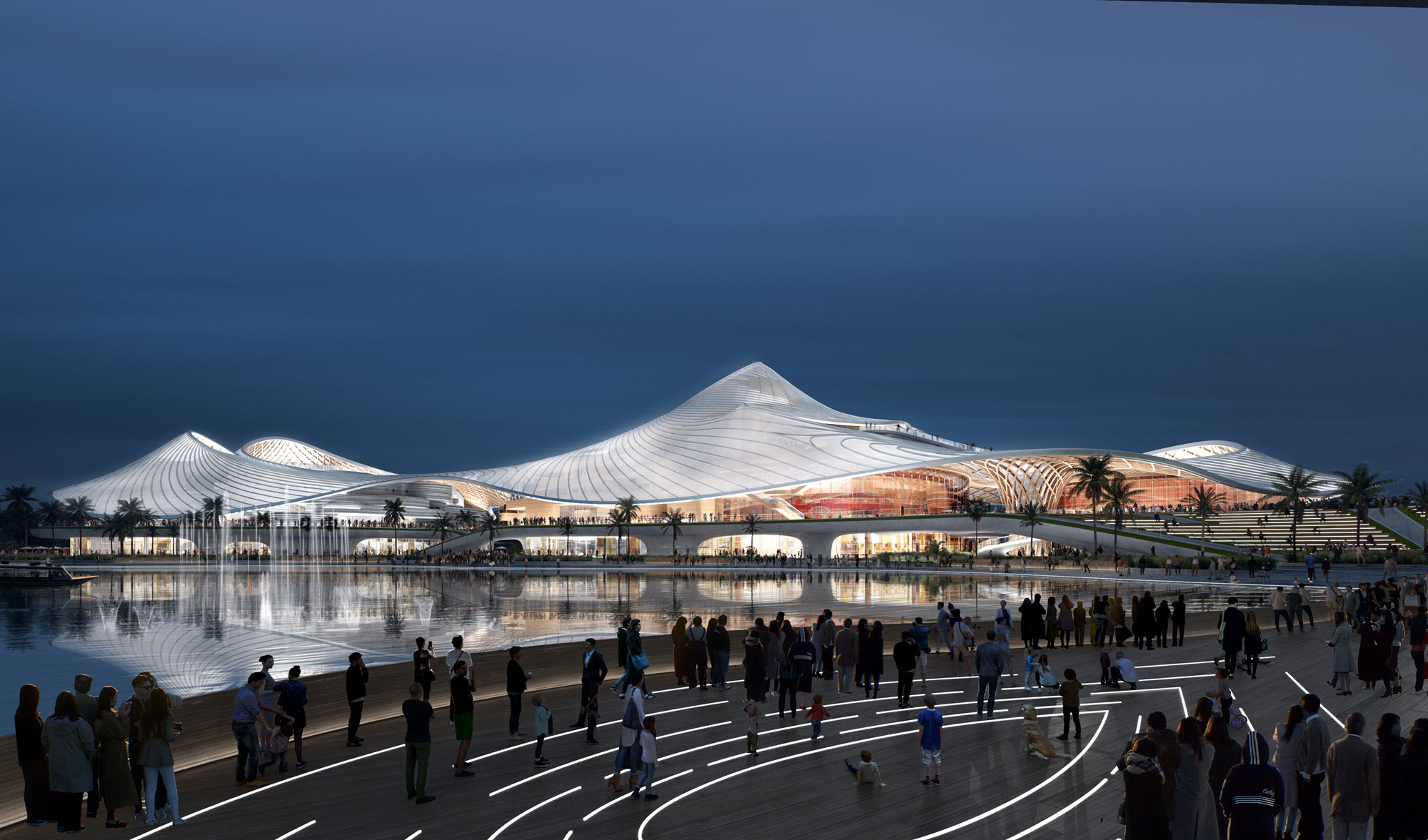
Green building elements are also key in the design.
Known for its low weight, durability, and light transmissivity, the center’s ETFE canopy will allow sunlight through for plants and photovoltaic systems while still providing shelter from rain and capturing rainwater. Curving walkways between outdoor patios through and on top of the canopy will provide elevated views and help connect the buildings together.
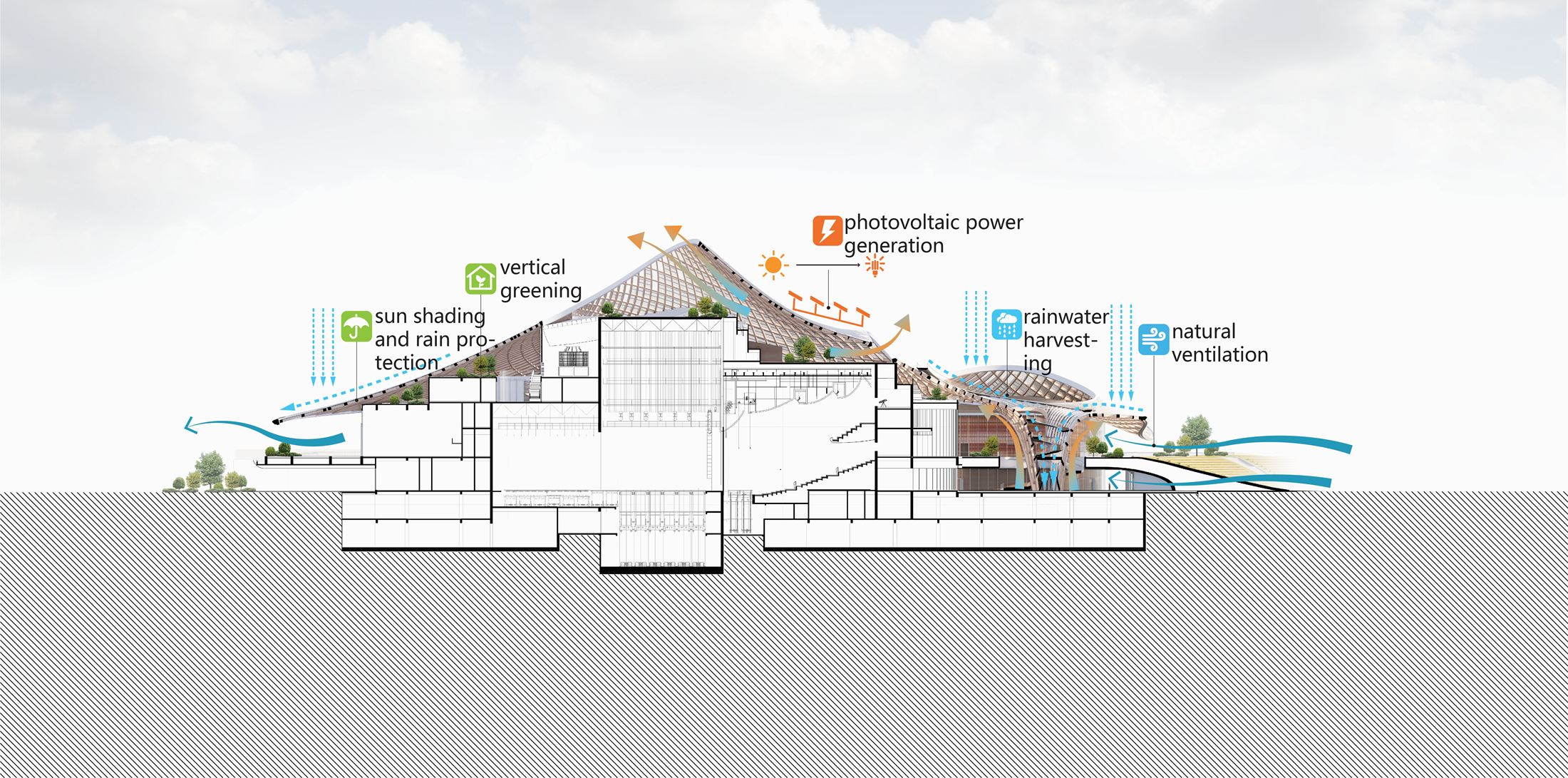
Underneath the canopy will sit a theater, museum, and sports center that focus on the permeability between the buildings, nature, and the remainder of the city.
“The two-story landscape platform extends outward, organically linking the central lake, riverfront park, and urban space, achieving a harmonious balance between nature and architecture,” writes MAD.
The new Grand Theater will comprise of a 1,500-seat amphitheater and 600-seat multipurpose hall, while the museum “will meet the standards of a national-level museum,” according to MAD. Together, the theater and museum will total some 89,000 sq m of floor area.
Across an open space from the gathering hall, a 32,000 sq m sports center will include swimming pools, basketball courts, badminton courts, and other sports facilities. The open space itself will serve as a visual axis for the entire arts center, extending into the project’s central water feature — Qiandeng Lake — with an observation platform.
Commercial spaces around the lake will radiate “architectural texture to the lakeshore landscape belt,” according to MAD.
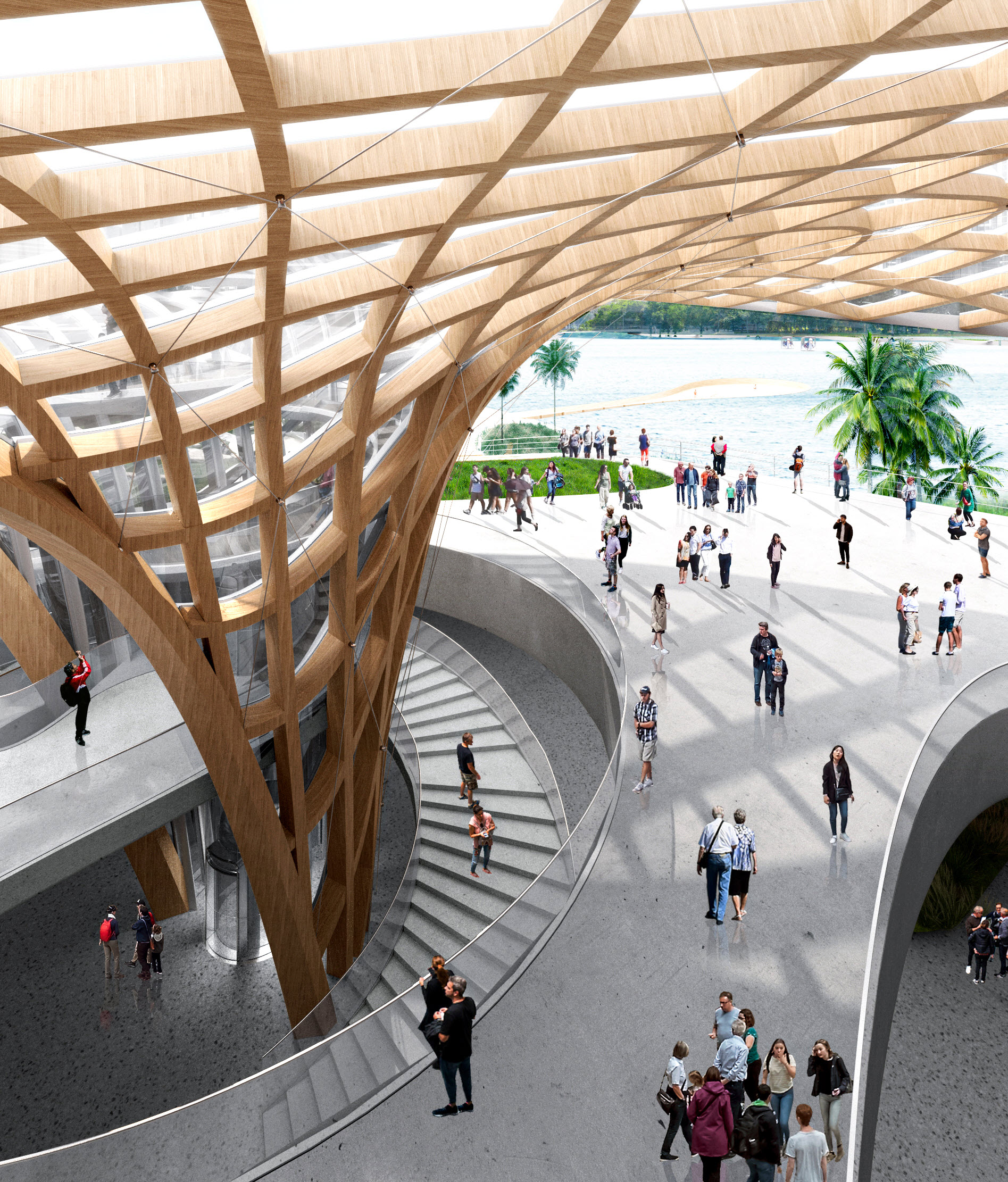
The Pearl River Delta megalopolis is home to some 74 million people, roughly three times the population of the New York metro area, and includes the megacities of Guangzhou and Foshan, between which the arts center will sit. Together, the two cities total about 27 million people, according to the U.S. Geological Survey.
MAD calls the Nanhai Cultural District “the heart of the Guangdong-Hong Kong-Macao Greater Bay Area.”
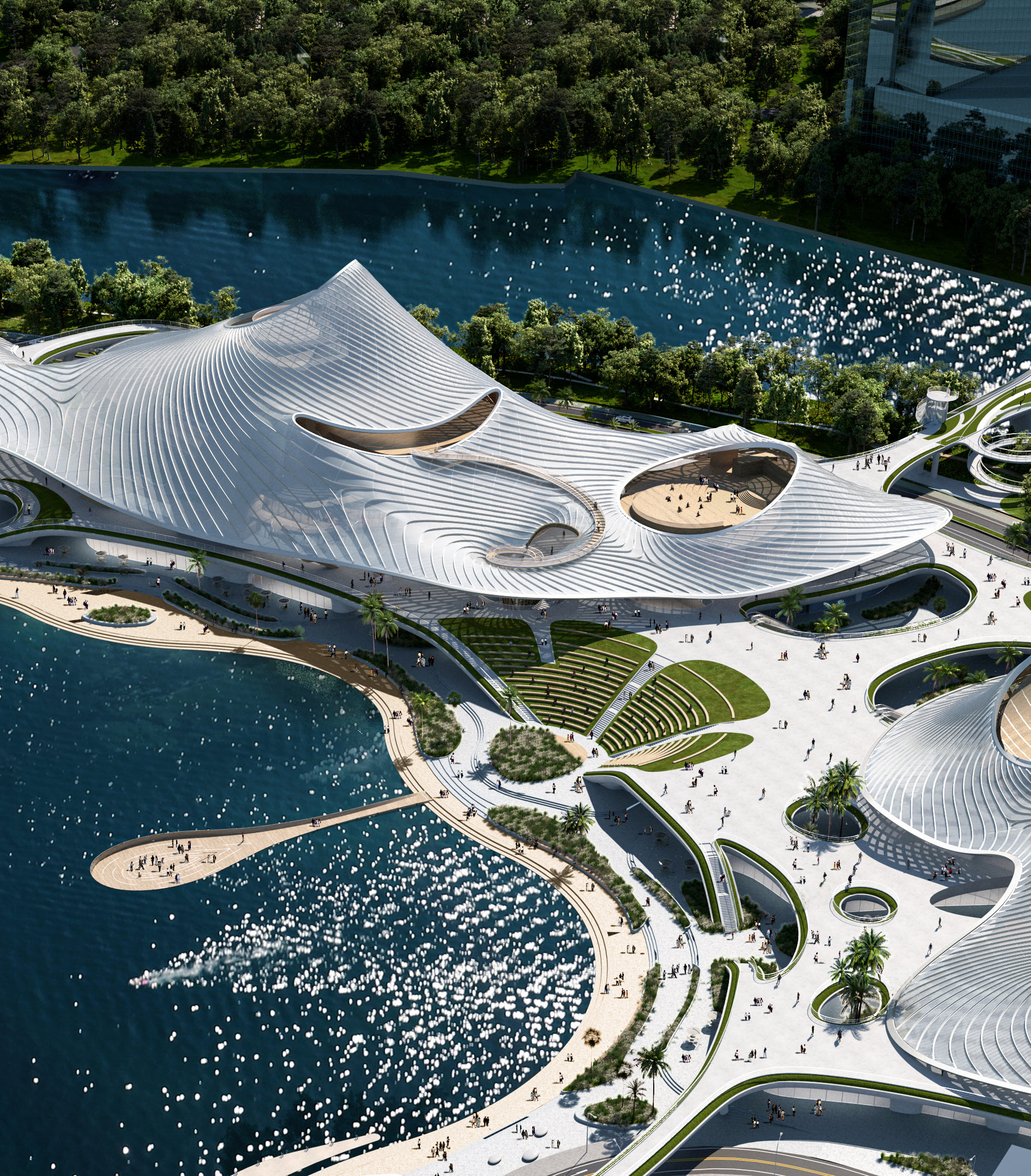
Construction is scheduled to begin this year with contractor Foshan Nanhai Liyayuan Real Estate Development Limited Co., and MAD expects the project to complete in 2029.
“The traditional culture of Nanhai is in the drum beat and boat drift during the dragon festival boat race and in the kung fu in the lion dance,” says Yansong. “Watching them, you can feel the dynamic, vibrant, and innovative spirit from ancient times till today. We want to bring it back to modern living here.”
This article is published by Civil Engineering Online.



